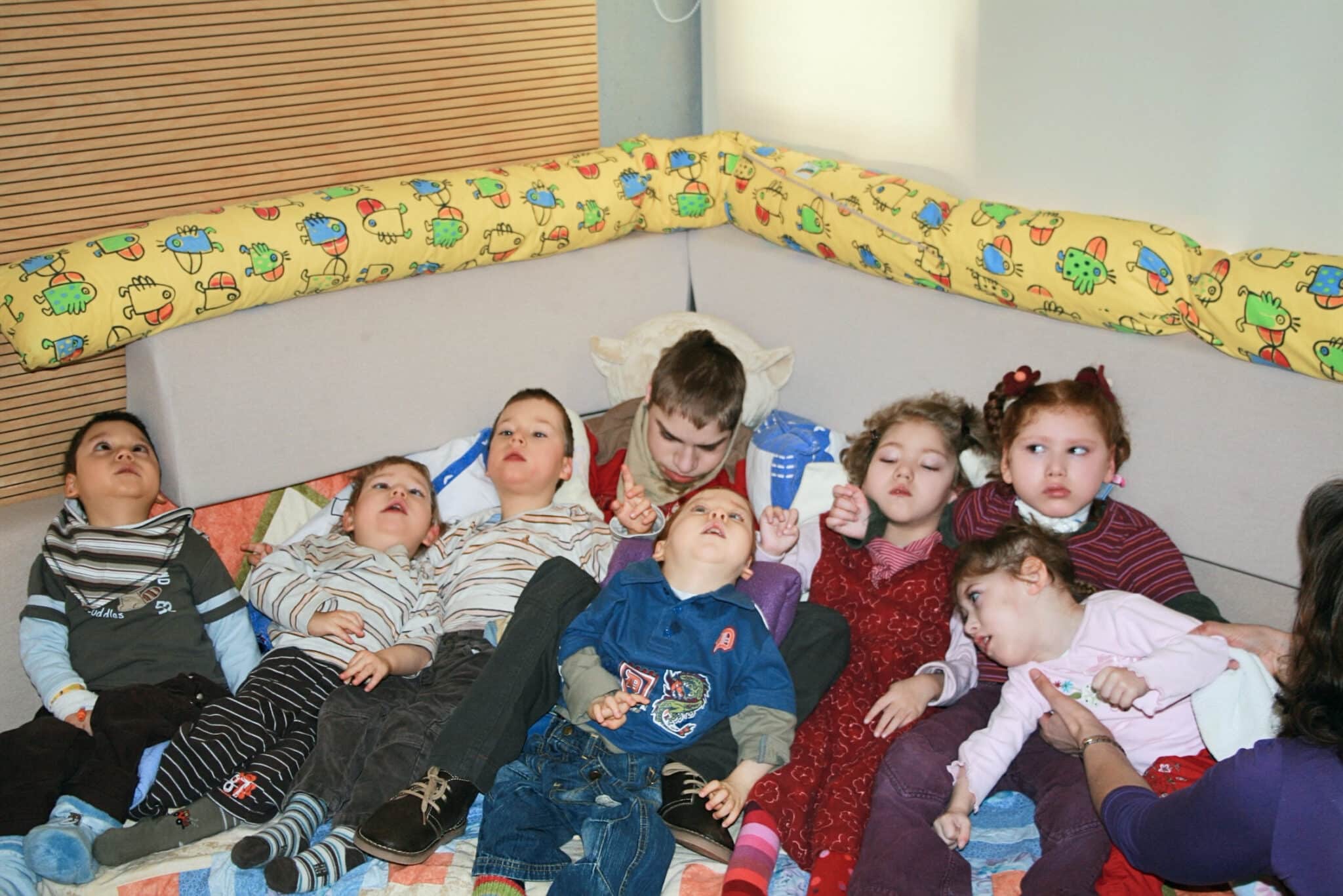Quick Overview PCH2 Symptoms and FAQ
Pontocerebellar hypoplasia type 2 (PCH2) is a rare, relatively unknown disease that causes severe physical and mental disabilities from birth and a reduced life expectancy in affected children. Read about pontocerebellar hypoplasia symptoms and frequently asked questions.
Pontocerebellar hypoplasia symptoms: PCH2 is characterized by a so-called early-onset choreatic or dyskinetic motor disorder, severe impairment of mental and motor development and progressive microcephaly. Swallowing and feeding difficulties are major challenges in caring for affected children and noticeable in everyday medical care, and digestive problems are also common. The children experience pronounced sleep problems and often develop epilepsy as the disease progresses. There are also indications of thermoregulatory disorders, whereby crises with an intensified motor disorder, seizures or muscle atrophy (rhabdomyolysis) can occur, particularly with regard to rapidly rising fever spikes.
Both mental and motor development of children with PCH2 is severely impaired. However, small developmental steps, such as a certain amount of head control or social smiling, are reached by some children.
There is no known causal therapy. Symptomatic treatment with medication, physiotherapy and surgery is used to alleviate the patient’s symptoms and make it easier to care for the patient. You can find more information on this in the Treatment Options section.
PCH2 is an autosomal recessive hereditary disease. The causative mutation for PCH2 was found in 2008. It is a mutation in the TSEN54 gene on chromosome 17q25. Most European patients have the homozygous mutation 919 G>T, p.Ala307S, defined as PCH type 2A (OMIM #277470).1.
PCH2 can be diagnosed on the basis of typical clinical symptoms and magnetic resonance imaging of the brain, which shows characteristic changes in the cerebellum and pons (a narrowing of the pons and a significant reduction in the size of the cerebellum). Hence the name “pontocerebellar hypoplasia”. The shape of the abnormal cerebellum is reminiscent of the wings of a bat or dragonfly and is therefore also described as “bat-wing” or “dragonfly-like”.
As a result, the dragonfly is often used as a symbol for PCH2.
Since the genetic discovery of the mutation, a diagnosis can be confirmed by means of a blood test. This means that affected families can also have the option of prenatal diagnosis.
ICD-10 code: Q04.3 Other reduction deformities of brain
ORPHAcode: 25242
Where can I find more information? Do you have materials for affected families?
An information brochure (in German and English) is available to download for affected families and interested professionals.
Printed copies can be sent on request and we would be grateful for a donation to cover postage costs. Please send an email to .
